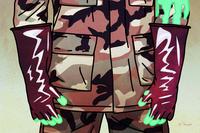As I work with hiring teams across the country, I am repeatedly asked questions about the risks of employing a military veteran who could have PTSD. "Do all veterans have PTSD?" "What are the risks to other employees by having someone on the team who has endured combat trauma?" "Is the military veteran 'stable'?"
Each time I encounter these questions or roadblocks to hiring, I remind employers of the misperceptions, and realities, of the condition known as post-traumatic stress disorder (PTSD). To best explain the condition, and what employers should know, I consulted with Duane France, a retired Army noncommissioned officer, clinical mental health counselor and creator of the Head Space and Timing blog and podcast.
LC: We know that civilians have beliefs around PTSD. What do you believe are their biggest misperceptions?
DF: "One of the single largest misperceptions that many employers have is that "all veterans have PTSD." That's certainly not true. Not even all combat veterans have PTSD. Repeated studies have shown that the rate of diagnosed PTSD is between 11% and 20% of combat veterans, nowhere near a majority of veterans.
"Another potential misperception is that PTSD causes a veteran to be "unstable" and "dangerous." This is also not true: As with any mental health condition, there are many factors to consider. Just because a veteran has a PTSD diagnosis doesn't mean that they will be a workplace liability."
LC: Lately, we hear some people call it PTS, and not PTSD. What is the difference?
DF: "There are many reasons individuals and groups prefer to refer to it as PTS [post-traumatic stress] rather than PTSD. Many veterans groups would prefer the name to be changed, while most in the mental health community would prefer to call it as PTSD.
"The thought is that the "D" signifies a disorder, when the symptomatic reactions associated with PTSD are common to anyone who experiences exposure to a traumatic event. One motivation for 'dropping the D' is to reduce the stigma against seeking support, by normalizing the condition. This may not always have the desired effect, though. Some veterans may think, 'I don't have a disorder, so I don't need help with it.'"
LC: Can a non-combat veteran experience PTSD? How?
DF: "PTSD is a specific condition that has defined criteria. For anyone to develop the psychological condition of PTSD, they must have experienced a situation in which they were exposed to death, threatened death, serious injury or sexual violence. They must have experienced it directly, heard about it happening to a close friend in clear detail or have been repeatedly exposed to the results of traumatic events in the course of their duties.
"There are, of course, numerous ways for this to happen: traffic accidents, sexual assault, natural disaster. A veteran who may not have experienced direct combat, but instead have handled the remains of fallen soldiers, or served as a liaison to wounded service members at a stateside location, could potentially develop PTSD."
LC: Can someone be cured of PTSD?
DF: "PTSD can be treated with mental health counseling, medications and lifestyle changes so that a veteran who has experienced PTSD symptoms experiences almost total relief of these symptoms.
"However, PTSD cannot be cured, as it causes neurological changes in the brain. It can certainly be managed and the symptoms reduced both in frequency and intensity, but there is nothing that will totally eliminate the condition."
PTSD is not a military condition; it is a human condition affecting roughly 8% of Americans. France encourages employers to understand the misperceptions around PTSD and other mental health conditions when considering hiring veterans.
Find the Right Veteran Job
Whether you want to polish your resume, find veteran job fairs in your area or connect with employers looking to hire veterans, Military.com can help. Subscribe to Military.com to have job postings, guides and advice, and more delivered directly to your inbox.
















